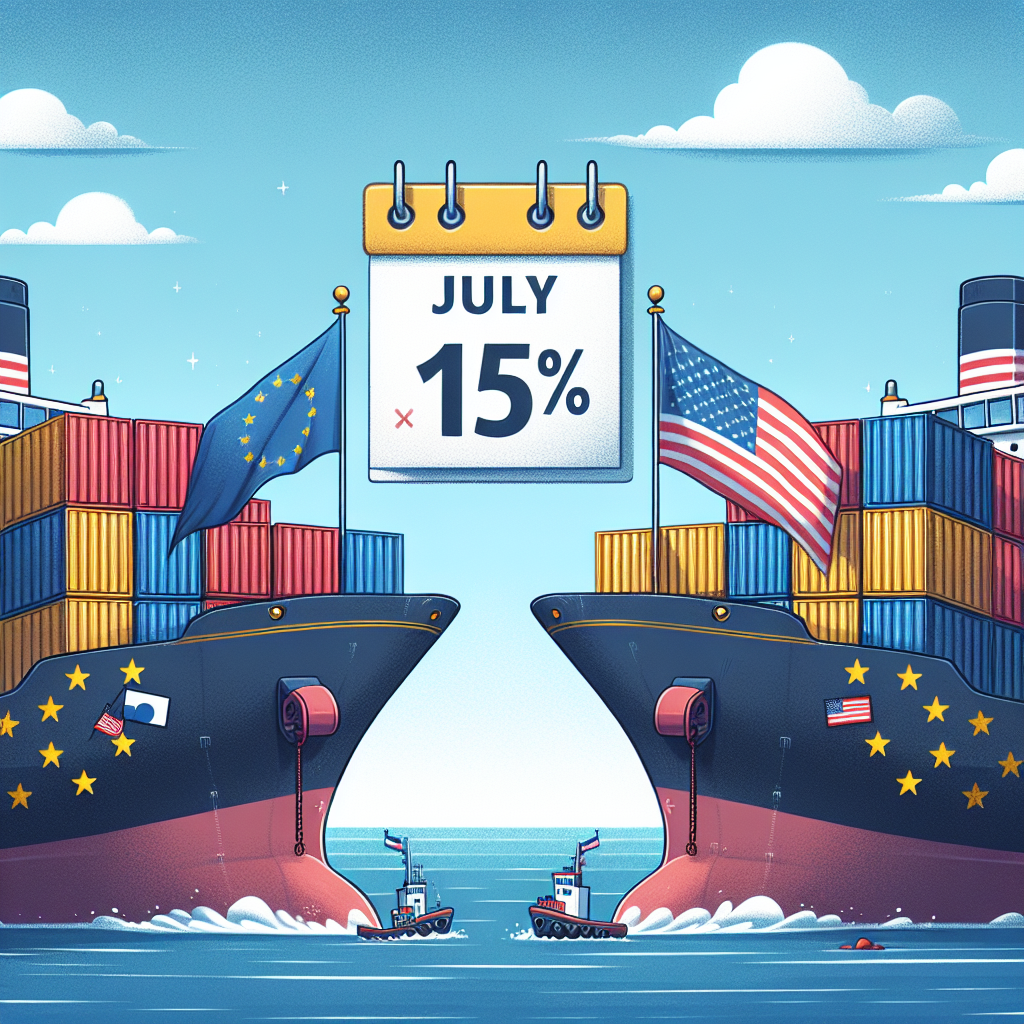On Wednesday, July 23rd, multiple media outlets reported, citing informed sources, that the European Union and the United States are on the verge of reaching a trade agreement. The United States is set to impose a 15% tariff on most European imports, similar to the agreement reached earlier this week between the United States and Japan.
The Financial Times cited three informed sources as saying that the EU may agree to the US’s reciprocal tariff proposal to avoid the US increasing tariffs to 30% starting from August 1st. Both sides plan to exempt certain products from tariffs, including aircraft, spirits, and medical equipment. Currently, the US’s 27.5% tariffs on European cars will also be reduced to 15%.
Sources also indicated that the EU is continuing to prepare a retaliatory tariff plan that could reach up to 93 billion euros, with a maximum rate of 30%, in case an agreement is not reached by August 1st.
Bloomberg quoted an anonymous diplomat as saying that EU member countries may accept the 15% US tariffs, with EU officials actively pushing for the agreement to cover industries such as automobiles. The diplomat added that EU steel and aluminum imports exceeding quotas would still face a 50% US tariff.
Diplomats expressed optimism about reaching an agreement, emphasizing that ultimate approval and signing by US President Trump is necessary, with his decision being unpredictable.
A government official stated that negotiations are still ongoing, and while an agreement is close to being finalized, both sides may not announce the results quickly.
In recent weeks, negotiations between the EU and the US have accelerated to avoid triggering a full-blown trade war due to Trump’s tariff threats. Two weeks ago, negotiators from the EU and the US were close to reaching an agreement but hit a roadblock after Trump tweeted that if an agreement is not reached by August 1st, most goods would face a 30% tariff.
If an agreement is not reached by the deadline, and the US follows through with the 30% tariff threat, the EU will implement retaliatory tariff measures.
These measures would include imposing a comprehensive tariff on US goods worth about 100 billion euros ($118 billion), with a rate equivalent to 30%. The EU is also discussing activating its Anti-Coercion Instrument (ACI).
Sources revealed that the EU’s executive body, the European Commission, is expected to garner sufficient support from member countries to activate this mechanism.
The Anti-Coercion Instrument is the EU’s most powerful trade tool aimed at external deterrence and requires approval from a majority of member countries before being initiated. Once activated, the EU can take extensive retaliatory measures, including imposing new taxes on US tech giants, implementing targeted restrictions on US investments, and limiting their access to the EU market.
Currently, the average tariff rate for EU-US trade is 4.8%. A new rate of 15% would represent a 10% increase from previous levels. The 15% rate is seen as the benchmark tariff rate for major economies, with smaller economies likely facing higher benchmark rates.
Some economists believe that while the proposed 15% tariff by the US is higher than before, it is still manageable and less damaging than the volatility caused by uncertainty, which has hindered investment planning for businesses.
On Tuesday, the US announced a tariff agreement with Japan, imposing a 15% tariff on its imported products, lower than the earlier announced 25% increase by Trump. This agreement also includes a 15% tariff on Japanese cars as well.

